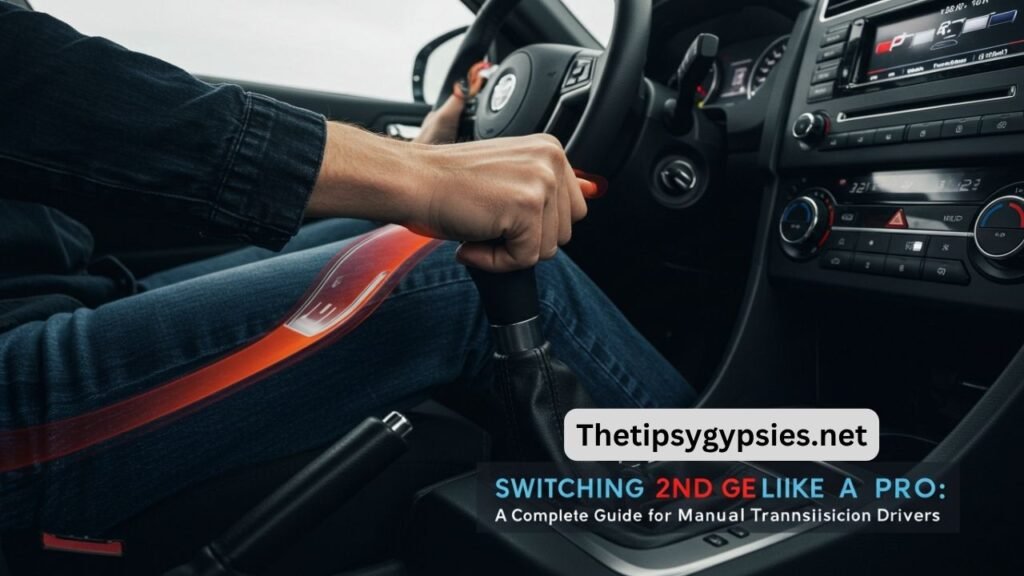Introduction: What is Switching 2nd?
If you’re learning to drive a manual transmission vehicle, you’ve likely heard how important switching 2nd is. This simple gear transition from first to second plays a crucial role in accelerating smoothly, protecting the transmission, and maintaining control of the vehicle. Mastering this process can elevate your driving skills, reduce mechanical stress, and make your rides far more enjoyable.
Why Switching 2nd is So Important
Though it may seem minor, switching 2nd is a fundamental part of driving a stick-shift car. It’s the gear you rely on right after takeoff. If you switch too early, the car may stall; too late, and you might damage the engine or transmission.
Smooth second gear transitions:
Allow better fuel efficiency
Improve driver control
Reduce wear on the clutch and gearbox
Lead to a more comfortable ride for passengers
Understanding How to Switch to 2nd Gear Correctly
To master switching 2nd, you must understand the mechanics behind the shift. It’s not just about moving the gear lever — it involves coordination between your feet, hands, and engine timing.
Step-by-Step Guide
Start from first gear: Accelerate gently while watching the tachometer.
Watch RPM: Aim to shift around 2,500–3,000 RPM depending on the car.
Press the clutch: Push the clutch pedal all the way down.
Move gear lever to second: Shift smoothly to 2nd gear.
Release clutch gradually: Don’t let it out too fast — this prevents jerking.
Accelerate steadily: Ease into the gas after the shift is complete.
Best Practices for Switching 2nd Gear Smoothly
While every car is slightly different, these best practices apply across most manual transmission vehicles.
1. Practice Throttle Control
Too much gas can cause revving, while too little might stall the engine. Learn to balance the throttle for a smooth shift.
2. Keep Your Foot Off the Clutch After Shifting
After switching 2nd, don’t rest your foot on the clutch pedal. This can lead to premature clutch wear, known as “riding the clutch.”
3. Listen to the Engine
Your car gives cues. If it feels like it’s straining or screaming, you’re either shifting too late or not applying the correct throttle.
Common Mistakes to Avoid While Switching 2nd
Even experienced drivers can make errors when transitioning to second gear. Here are some issues to watch out for:
Shifting Too Early
If you shift too soon, especially below 2,000 RPM, the car may hesitate or even stall. Always ensure the engine has built enough momentum.
Releasing the Clutch Too Fast
Dumping the clutch too quickly can cause the vehicle to jerk. This creates stress on the drivetrain and makes for an uncomfortable ride.
Not Fully Pressing the Clutch
Incomplete clutch depression can cause gear grinding — a damaging issue over time.
Situational Tips for Switching 2nd Gear
Different driving environments may require slight adjustments in how you shift.
In Traffic
Light acceleration and frequent stops mean you’ll be switching 2nd often. Maintain low RPMs and keep your clutch control sharp.
On Hills
To avoid rollback, consider using the handbrake or clutch balancing while moving from 1st to 2nd on a slope.
In Sports or Performance Driving
You may need to shift at higher RPMs. Drivers also use techniques like rev-matching for a quicker and smoother shift into 2nd gear.
How Vehicle Type Affects Switching 2nd
Not all cars shift the same. Here’s how different setups can change the process.
Compact Cars
These generally require lighter clutch work and shift at lower RPMs.
Diesel Vehicles
Diesel engines usually operate efficiently at lower RPMs, so you’ll shift into second sooner than in a petrol vehicle.
High-Performance Cars
Performance vehicles demand precision. The clutch is typically heavier, and switching 2nd must be faster and more accurate.
Tips for Beginners to Practice Switching 2nd
If you’re new to manual driving, here’s how to practice effectively:
Start on flat ground to eliminate rollback pressure.
Use a quiet street or empty parking lot.
Focus on timing between clutch release and throttle.
Record your practice sessions if possible to review and improve.
With patience, your shifts will become second nature.
Mechanical Impact of Poor Gear Switching
Improper switching 2nd can damage several parts of your vehicle over time:
Clutch Plate: Excessive slipping leads to faster wear.
Synchromesh: Grinding gears causes this part to fail early.
Transmission: Repeated jerky shifts can wear down internal gears.
Driving smoothly extends the lifespan of these components and saves you from costly repairs.
Upgrading Your Skills: Going Beyond Second Gear
Once you’re comfortable with switching 2nd, you’ll find moving through the rest of the gears much easier. The same principles apply—timing, coordination, and feel. As you gain confidence, try learning advanced techniques like:
Rev Matching: Balances engine speed to match road speed when downshifting.
Heel-Toe Shifting: A technique used in motorsports to downshift smoothly while braking.
These are not necessary for everyday driving, but they’re excellent skills if you’re passionate about driving.
Conclusion: Switching 2nd is a Skill Worth Mastering
Switching 2nd may seem like a small step in the driving process, but it’s one of the most essential parts of learning to drive a manual car. Done properly, it results in smoother acceleration, better fuel economy, and less wear on your vehicle. With practice, attention to timing, and a focus on smooth transitions, you’ll be shifting gears like a pro in no time.






